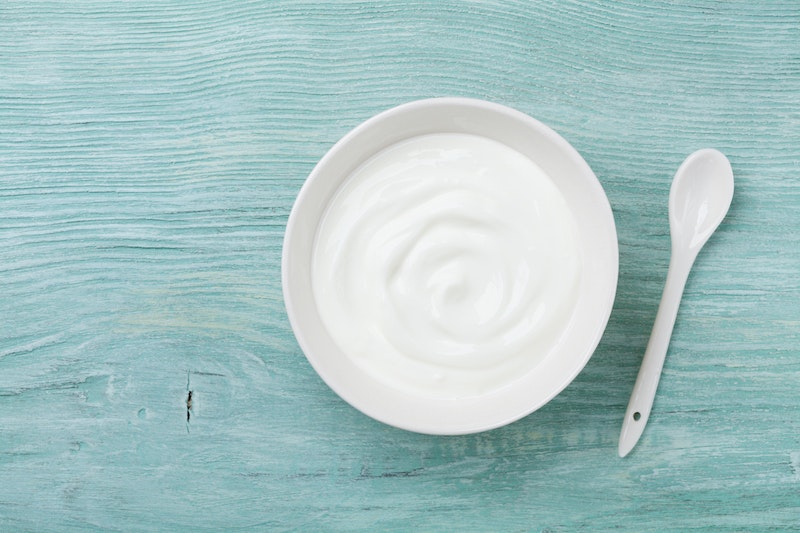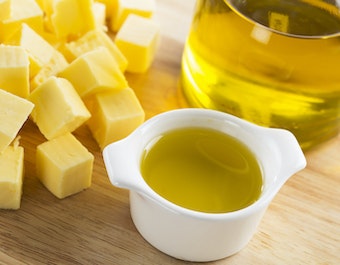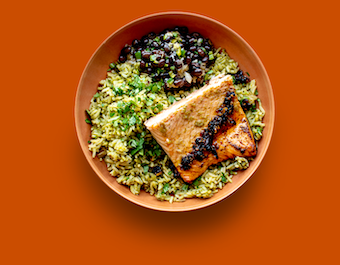The gut microbiome has officially gone mainstream. People are paying a lot more attention these days to the microorganisms that call our bodies home. And the research is finding that not only do these organisms affect digestion, they also may play a role in allergies and asthma, diabetes, obesity, mental health, and other conditions.
The good news is, by focusing on gut-friendly foods you may be able to begin to improve your gut health, says Dawn Jackson Blatner, RD, a nutritionist and author of “The Superfood Swap” and “The Flexitarian Diet.”
Hence the reason behind the rising popularity of fermented foods like kimchi, kombucha, and kefir –– the big Ks. Fermented foods contain probiotics, the live bacteria that may be good for your gut.
“This combination of prebiotics — the non-digestible food components that nourish the good bacteria in the gut — and probiotics — the good bacteria or live cultures like those already found in your gut” may help you achieve a “healthy balance in the digestive system,” says Beth Stark, RD, LD, a nutrition and lifestyles initiatives manager for Weis Markets.
Stark recommends eating powerful probiotic/prebiotic one-two combos such as her favorite — yogurt with banana, topped by a small sprinkle of toasted oats or chopped nuts. Read on for more ideas on foods that will give your gut health a boost (and those that won’t).
Probiotics
Foods containing probiotics may help improve the overall health of your microbiota and influence immune function. In most cases, to get the probiotic benefit, eat these foods at cool or room temperatures since heat can destroy live cultures of bacteria. Also make sure to check package labels since many fermented foods are loaded with added sugar and sodium, Stark says.
1. Kefir
The tangy, liquid, yogurt-like drink kefir, has a unique triple combo Blatner says. Not only does kefir contain lactic acid bacteria, it also has active yeasts, and the protein complex, the kefir grain. You can drink this fermented milk made from kefir grains on its own or use it to make oatmeal or smoothies, or as a substitute for buttermilk, Blatner says. Choose a plain variety to avoid added sugars.
2. Yogurt
Good old-fashioned yogurt is teeming with probiotics — as long as you choose a variety that contains live and active cultures (such as lactobacillus bulgaricus). That label means it has at least 100 million cultures per gram. And good news — the bacteria in yogurt comes with less lactose content than other milk products, so even if you’re lactose intolerant to other foods, you may be able to eat it without issue, Blatner says.
3. Aged cheeses
If you’re a big-time cheese lover, some aged-cheeses — Parmesan, Swiss, cheddar, Gouda — contain probiotics, Stark says. You don’t want to go overboard, she cautions, but if you’re eating cheese, you might as well choose one that brings some probiotics along for the ride.
4. Tempeh
Soy sometimes gets a bad rap, Blatner says, but that’s in cases where people are eating soy protein isolates, not the whole food. Tempeh, a tofu-like fermented food made from soy beans, for example, contains probiotics and is also a good source of protein, iron, and copper, and a great meat alternative.
5. Kombucha
Kombucha is a lightly carbonated, fermented drink made from sweetened black or green tea. During the fermentation process, a little alcohol is produced. Kombuchas with 0.5% or more alcohol must be labeled as an alcoholic beverage, so check the labels.
6. Fermented vegetables
Prost! If German food is your jam, enjoy the probiotic punch from the fermented cabbage dish sauerkraut. If you prefer an Asian spin on a cabbage dish, try the fermented South Korean staple kimchi. Fermented veggies and fruits, including pickles and olives, are a great source of probiotics and can easily be added to salads, sandwiches, or wraps, or enjoyed on their own.
Prebiotics
Probiotics are important, but for better gut health, you need to help bacteria thrive, which means giving them something to eat, Blatner says. That’s where prebiotic fibers — fructans, inulin, fructooligosaccharides, galacto-oligosaccharides — come in.
Despite their fancy names, these fibers aren’t hard to find from food. Look no further than fruits, vegetables, whole grains, nuts, beans, and lentils, Blatner says. Not only does fiber “act like a broom to keep your digestion moving along,” she says, a 2019 study found that people with diets higher in fiber and whole grains had lower rates of cardiovascular disease, certain cancers, and diabetes.
1. Oats
Whole oats are a fantastic fiber-rich food and a resistant starch, a type of carbohydrate that doesn’t break down in the small intestine, but instead, ferments in the large intestine and feeds the good gut bacteria. Whole oats are a less processed oat, where the bran, germ, and endosperm are retained. Research has shown that resistant starch can be beneficial for healthy bowel functions.
2. Garlic Break out the breath mints and enjoy the ever-versatile garlic. Garlic comes packed with inulin fiber and prebiotic fructooligosaccharides (FOS). Add raw garlic to homemade salad dressings, guacamole or pico de gallo. Other foods that are naturally high in inulin include leeks, onions, and Jerusalem artichokes.
3. Apples
Portable and flavorful, apples are also full of pectin, a type of prebiotic fiber, and polyphenols, a type of plant compound that gut microbes love to munch on. If you can handle eating the fibrous core, even better. A study in Frontiers in Microbiology found that an entire apple contains 100 million bacteria.
4. Beans
Maybe you steer clear of beans because of their noisy side effects, but a little bit of gas isn’t always a bad thing. Beans contain soluble fiber, which gets broken down by bacteria in the large intestine, a process that causes gas, but also indicates that your gut bacteria are enjoying a good meal. As with fiber in general, go slowly when you’re adding beans to your diet, to help your body adjust, Blatner says.
What to avoid
As part of healthy eating, it’s a good idea to avoid or limit foods packed with added sugar, which feeds bad bacteria, Blatner says, as well as highly processed foods, artificial sweeteners, red meat, and alcohol, which can have a negative effect on gut bacteria, and lead to inflammation.
Here are three foods to skip or cut back on to help keep your gut healthy:
1. Diet soda
The true impact of artificial sweeteners isn’t completely known, but some studies have shown that artificial sweeteners like saccharin and sucralose, which are used in some diet sodas, can change people’s gut microbiota population. The carbonation in soda also can cause bloating and belching.
2. Saturated fats
A diet high in saturated fats (those found in fatty meat, butter, and cheese) can affect both the diversity and abundance of your good gut bacteria.
3. Red meat
Studies have shown that red meat lowers the number of microbes in the gut. A Cleveland Clinic study found that when carnitine, a compound in red meat, mixes with gut bacteria, it causes trimethylamine N-oxide (TMAO) to form. At higher levels, TMAO is linked to a greater risk for cardiovascular disease and earlier death.
Bottom line: Lower microbiota diversity has been tied to conditions such as inflammatory bowel disease, diabetes, and obesity. To keep your gut healthy, drink enough water and eat a wide variety of gut-friendly foods, Stark says. Take care of the friendly bacteria in your gut, and they will help take care of you.
KATE ROCKWOOD
Rally Health





